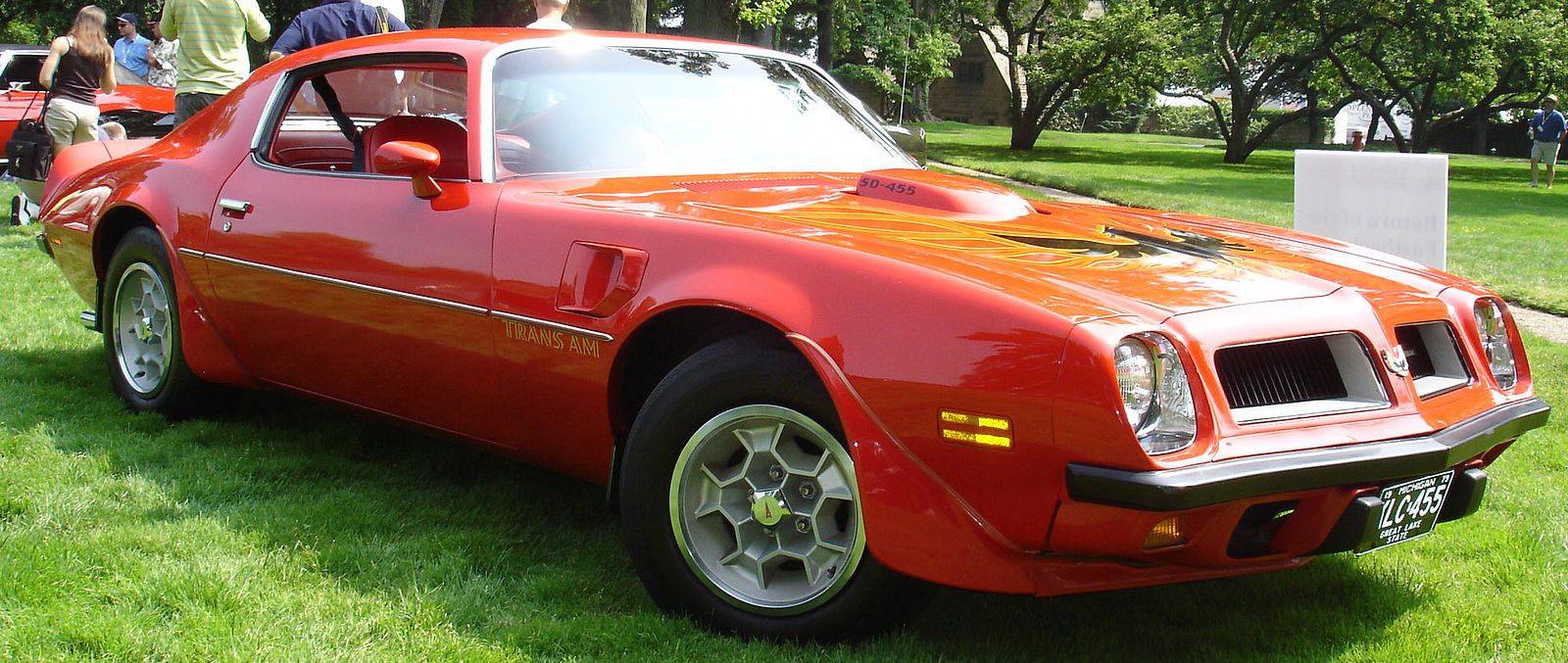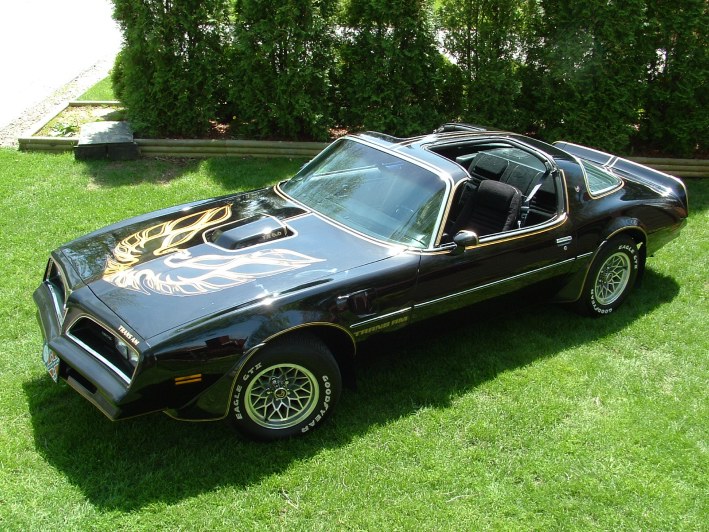Difference Between Trans Am and Firebird
We take a look at the Firebird, one of the most iconic muscle cars in the automotive history, and its big brother, the Trans Am, the classic American muscle. While all Trans Ams are Firebirds, not all Firebirds are Trans Ams. This is because Trans Am was an upgraded and improved Firebird that was introduced as a specialty packaged Firebird starting in 1969.

What is a Firebird?
It’s easy to understand how a name became a symbol of American culture. Since its inception in 1967, the Firebird garnered a lot of media attention followed by strong consumer sales. General Motors first used the name “Firebird” in its line of concept cars in the 1950s and the years that followed, the Firebird went on to become an American super car in the 1970s. Designed as a pony car to compete with the Ford Mustang, the Firebird has garnered a reputation for being larger than life. With significant performance tweaks and iconic styling of the generations that followed, the Firebird went on to become one of the most iconic muscle cars of the 1960s.
The Firebird has had a great run throughout its 50-year golden history, followed by the constant changes in the engine performance to the body getting redesigned and improved. In fact, over its life, the Firebird has evolved significantly, reflecting general changes and trends in the auto world at large. The tale of the great Firebird reflects the development of the mainstream domestic car in the modern era. Pontiac went to great lengths to give its car an identity that would be remembered for years to come. The Firebird etched its name in the history of the automotive world and is still considered one of the greatest muscle cars of all time.

What is a Trans Am?
The Trans Am was one of the most recognized muscle cars of its era. Performance was always a key component in the Firebird engineering and Pontiac upped its game with a new line of sporty cars which went on to become one of America’s most successful muscle cars. The Trans Am coupe was introduced in the 1969 model year and was only available in Cameo Ivory with twin longitudinal Nassau Blue stripes. Equipped with high performance engines, the Trans Am was marketed toward buyers looking for a fine visual appeal than the standard Firebird line. The Trans Am combines power, agility, comfort and beauty in a package that also offers fuel efficiency and safety.
The Camaro and the Firebird hit the market just as a new American road racing series was becoming immensely popular. So, capitalizing on the immensely popular pony cars, the Sports Car Club of America (SCCA) spearheaded the development of a new series of racing cars called Trans Am. Pontiac paid the SCCA $5 for each Trans Am built for the right to use the copyrighted name. The 1969 Firebird received new front and rear styling to match the looks of the new Pontiac Grand Prix and contemporary GTO. The new visual tweaks and improvements took the Firebird to a muscular side. The new look gathered a lot of attention and the popularity has continued through four generations of the Firebirds.
Pontiac has reportedly sold over 2 million Trans Ams throughout its lifetime. The classic American muscle has also made its appearance in some of America’s most popular movies and it served as the pace car for the world’s most prestigious race events. The underperforming division of the GM in the 1950s had risen from near extinction to become one of the largest selling car companies in the America in a short span of time, all thanks to an intricately created racing image backed by equally powerful racing cars – the Firebirds and the Trans Ams.
The First Firebird
The year 1967 marked the Pontiac’s magnificent entry into the American pony car market with the classic Firebird. The name Firebird was previously used by General Motors in its line of concept cars in the 1950s. The 1967 Firebird was available with five transmission choices and the base Firebird had a standard Pontiac-built overhead-cam (OHC) inline 6-cylinder engine with the 326-ci V-8 optional. The V-8 engine options were available as the Firebird 326, 326 HO, and Firebird 400. All models were available in sports coupe and convertible variants.
The First Trans Am
The Trans Am is an upgraded package of the Pontiac Firebird introduced to the market in 1969. Offered as a Trans Am Performance and Appearance Package, the Trans Am coupe was introduced in the 1969 model year and was available in Cameo Ivory and had blue racing stripes across the car’s hood and trunk. It was powered by the UPC L74 400 Ram Air engine, and had a black vinyl interior and Rally II wheels. There were only 697 of them built in 1969, out of which only eight were convertibles.
Performance Improvement
The Trans Ams were essentially the turbocharged Firebirds that took the performance of the Firebirds off the charts with powerful engines that came with increased horsepower, better handling and suspension, and top notch interiors. The 1967 Firebird was the first vehicle sold in America to use a hood-mounted tachometer. All the rubber suspension bushings were replaced with steel and nylon and the steering box gears were swapped out for a quick-shift set. The entry level 326 V-8 engine amped up to 350 ci and the 60-inch wide rear spoiler really stood out.
Summary
Although, the legacy of the Firebirds continued for four generations with models in production since the inception of the first Firebird in 1967 through 2002, GM ceased production of new Pontiacs in 2002 owing to declining sales and losing stakes in the sports coupe market. The Firebird never got the contemporary styling treatment as other big names in the GM’s family of muscle cars, such as the classic Camaro. The once pony car trendsetter, started by the mighty Firebird is now officially gone and Pontiac had discontinued its operations under that brand name since 2010. But the legacy of the classic muscle car stays forever and the name Firebird can hardly be forgotten.
- Difference Between Caucus and Primary - June 18, 2024
- Difference Between PPO and POS - May 30, 2024
- Difference Between RFID and NFC - May 28, 2024
Search DifferenceBetween.net :
Leave a Response
References :
[0]Rotella, Rocky. The Definitive Firebird & Trans Am Guide 1967-1969. Minnesota, United States: CarTech Inc., 2016. Print
[1]Schild, Jim. Original Pontiac Firebird and Trans Am 1967-2002. Minnesota, United States: Motorbooks, 2007. Print
[2]Cranswick, Marc. Pontiac Firebird: The Auto-Biography. Dorset, United Kingdom: Veloce Publishing, 2013. Print
[3]Newhardt, David. Pontiac Firebird: 50 Years. Minnesota, United States: Motorbooks, 2007. Print
[4]Newhardt, David. Firebird Trans Am. Minnesota, United States: Motorbooks, 2005. Print
[5]Image credit: https://commons.wikimedia.org/wiki/File:1978_Trans-Am_bandit.jpg
[6]Image credit: https://commons.wikimedia.org/wiki/File:70s_Firebird.jpg
